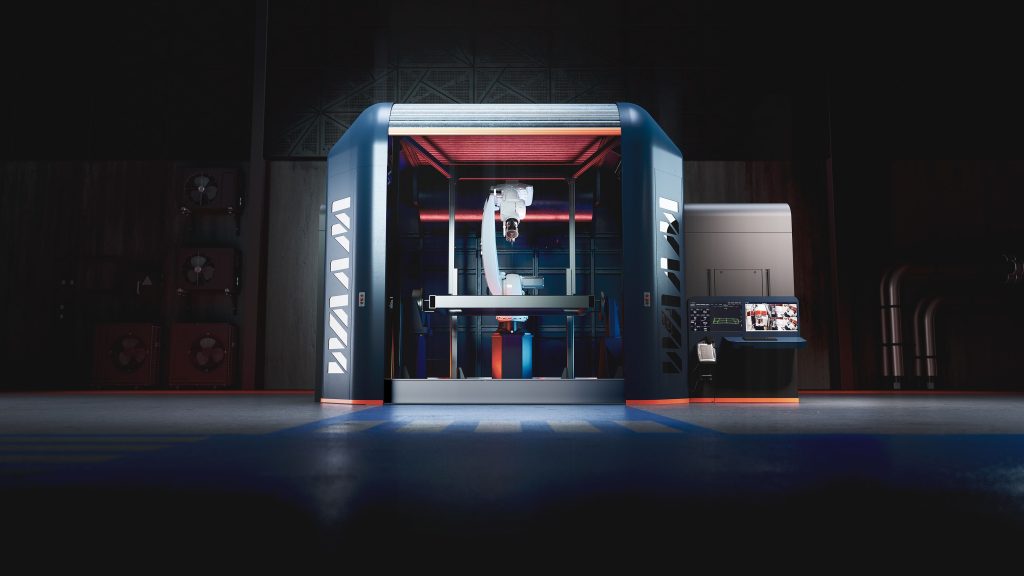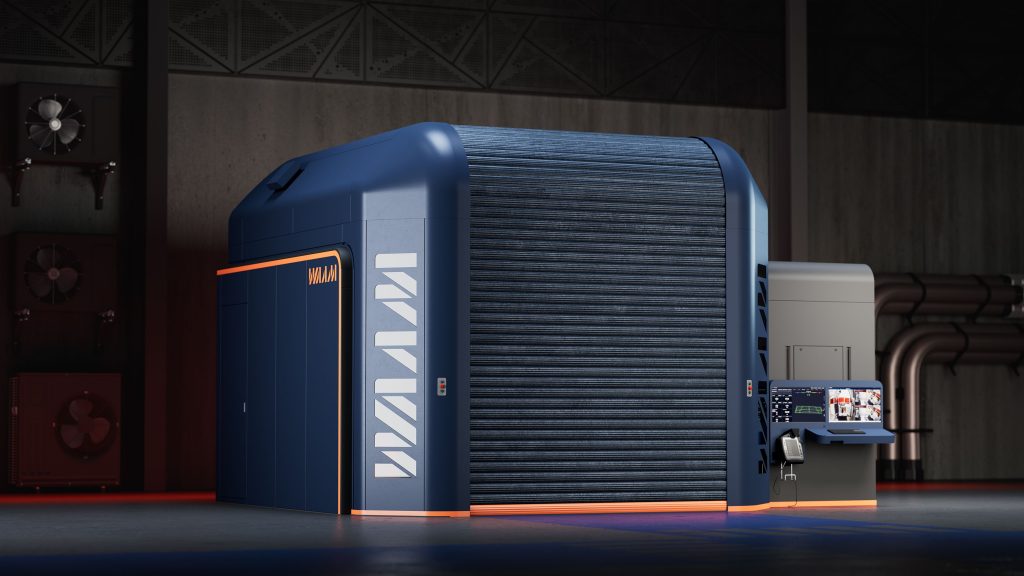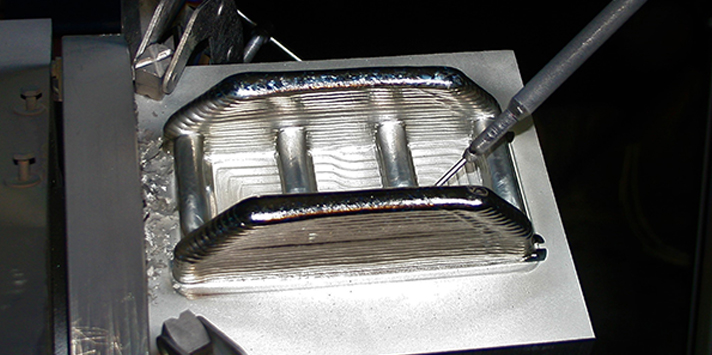This week’s been an exciting one for the Directed Energy Deposition (DED) 3D printing space, with two new announcements from system manufacturers WAAM3D and Sciaky.
Cranfield University spin-out WAAM3D has launched an all-new large-format 3D printer operating on the firm’s Wire Arc Additive Manufacturing (WAAM) technology. Named RoboWAAM, the metal printer sports a huge build volume of 2 x 2 x 2m and is packed full of new sensing hardware to serve customers in aerospace, defense, energy, and more.
On the other hand, Sciaky’s proprietary Electron Beam Additive Manufacturing (EBAM) process has managed to surpass deposition rates of over 40lbs. (18.14kg) per hour using titanium. According to the firm, this makes it the fastest industrial metal 3D printing process in the world.

Multi-meter printing with RoboWAAM
Equipped with its own robotic arm, the RoboWAAM is designed to be a turnkey metal 3D printing system capable of processing “virtually any material” available in wire form. It’s suitable for fabricating both new components and repairs on existing metal parts.
Included in the list of novel hardware additions is ShapeTech, a new interferometric sensor technology that extracts the layer height values of every point in the part as it’s being printed. This eliminates the need for any additional laser scans or tedious touch-probe quality checks once the build is complete.
There’s also a new double-point temperature measurement function that controls the deposition printing parameters and checks the parameters for reliability in-situ. Wire positioning is now done electronically for superior process stability.
On the safety side of things, RoboWAAM features a dedicated Fume Management System for containment, filtration, and treatment. The machine is also fully shielded for safely processing reactive materials with automatic purging, atmosphere maintenance, and evacuation cycles.
WAAM3D has integrated a process camera for remote melt-pool monitoring, as well as CCTV for supervision purposes. The machine has a large material spool capacity of 70kg.
RoboWAAM also comes with the firm’s in-house software suite, comprising four programs. This includes WAAMPlanner, an advanced toolpath planner; WAAMKeys, which eliminates defects and automatically calculates printing parameters; WAAMSim, a simulation program for printing environment visualization; and WAAMCtrl, the comprehensive operating system featuring an operator dashboard, digital twin capabilities, and a database for build records.

Sciaky’s deposition record
Sciaky’s 40lbs. per hour EBAM deposition record was set by the Saint Exupéry Institute for Research in Technology (IRT), France, while working on the Metallic Advanced Materials for Aeronautics (MAMA) project. MAMA was launched in 2019 with the goal of developing a new titanium aircraft component production process via a combination of die forging and metal 3D printing.
As part of the MAMA project, the researchers have so far used EBAM to deposit over 150kg of titanium across three different applications. Manufacturers Airbus and Aubert & Duval have been key contributors to this. There are also further projects planned for 2022 and beyond.
“Sciaky is excited about EBAM’s new deposition rate milestone,” said Scott Phillips, President and CEO of Sciaky. “We are committed to discovering new applications for EBAM that will help manufacturers save significant time and money on part production, as well as improve part quality.”

Although usually relatively quiet, the DED 3D printing sector can yield some very interesting developments. Earlier this year, researchers from NOVA University Lisbon developed a new form of WAAM that’s specifically designed for small parts and fine feature details. Named µ-WAAM, the high-precision 3D printing technology utilizes metal wire materials with a diameter of just 250µm.
Elsewhere, MX3D, a developer of wire-based metal DED technology, recently unveiled its partly 3D printed ‘WAAM Clamp’. The hybrid industrial part is an example of a pipeline clamp, a component used to seal high-pressure leaks in the chemical and oil and gas sectors.
Subscribe to the 3D Printing Industry newsletter for the latest news in additive manufacturing. You can also stay connected by following us on Twitter, liking us on Facebook, and tuning into the 3D Printing Industry YouTube Channel.
Looking for a career in additive manufacturing? Visit 3D Printing Jobs for a selection of roles in the industry.
Featured image shows WAAM3D’s RoboWAAM 3D printer. Photo via WAAM3D.


